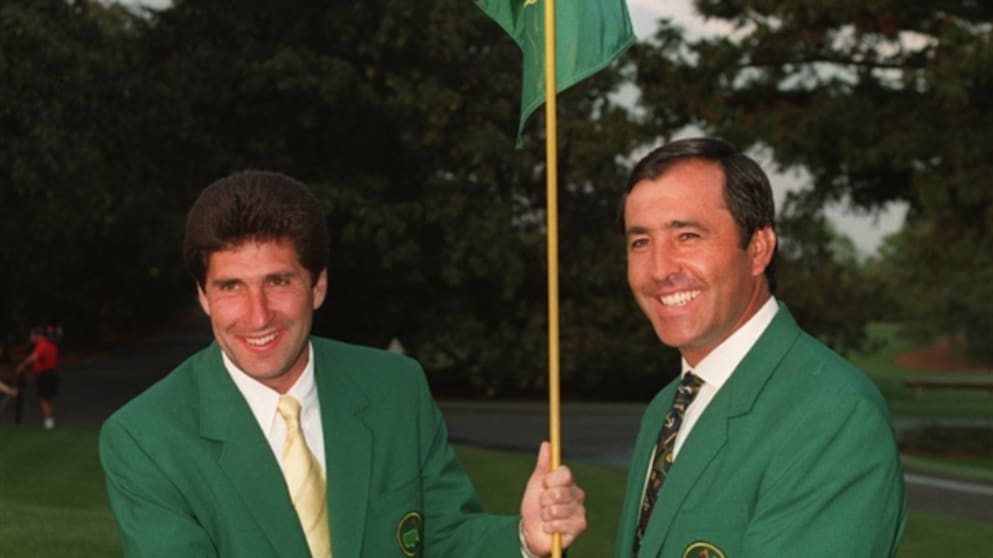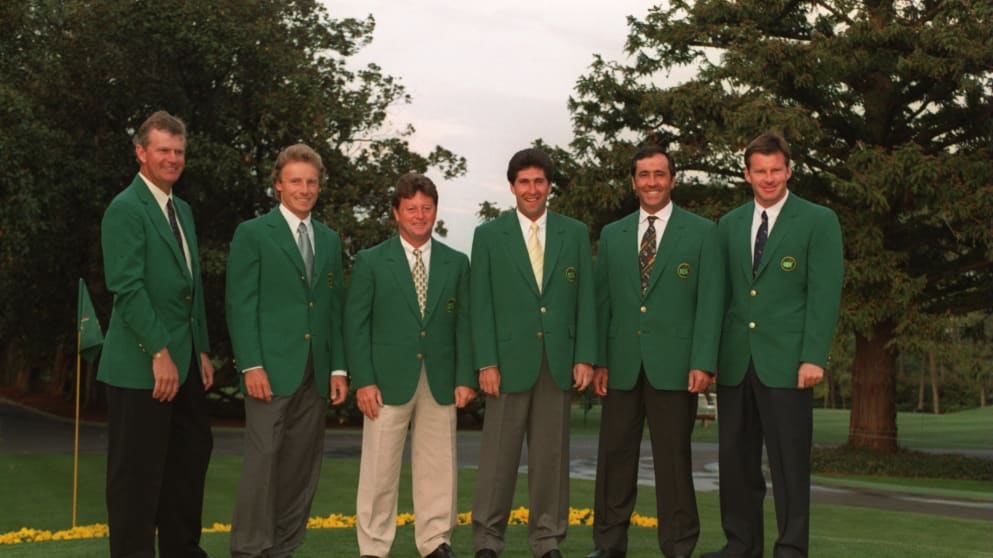41 years ago, Seve Ballesteros cemented the start of a European legacy at Augusta National.

When Seve Ballesteros won the Masters Tournament in 1980 at the age of 23, he replaced Jack Nickalus as the youngest player ever to win the Green Jacket. But his victory was more than just an achievement specific to that one tournament: As the first ever European, it signified the beginning of a new legacy at Augusta National.
He had already announced himself on the world stage as a teenager when he finished as the runner-up to Johnny Miller at the 1976 Open Championship, and when he arrived at Augusta National in 1980, he did so as the reigning Open Champion – having prevailed for his first Major triumph at St. Andrews in 1979.
Yet facing Ballesteros was a difficult task. Until that year, no European had ever secured a Green Jacket, and as just one of four Europeans in the field that week, the odds were stacked against his favour.
But Seve, who turned 23 on the eve of the tournament, held a lot of belief when it came to his ability to win around Augusta National.
We’ll never see another Seve pic.twitter.com/h4RJsJPbph
— The European Tour (@EuropeanTour) April 9, 2018
The first three days proved the exciting, charismatic Spaniard was ready with a game that suited the course. He opened with a first round 66, which he followed with rounds of 69 and 68 to take a seven-stroke lead into the final round.
By the 10th tee on Sunday, Ballesteros led by a staggering 10 shots, but as the cliché goes: ‘the Masters doesn’t begin until the back nine of Sunday’.
He dropped four shots over the next four, and with a charging Jack Newton, suddenly Ballesteros’ lead was dramatically cut to just a couple of shots. However, the Spaniard quickly regained composure with a birdie at 15 before parring his way in to complete a four stroke victory, and add his name to the history books.
"I was comfortable - 10 shots is a lot," Ballesteros said after his victory. "Then I was uncomfortable. I'm in trouble. I was thinking I was about to lose the tournament. I say I must try hard and, finally, I started playing well."
That week paved the way for a new sense of belief among European golfers, and imarked the start of two decades of European dominance, winning 10 of 20 Masters titles between 1980 and 2000.
Ballesteros won again in 1983, before being followed by Bernhard Langer in 1985, Sandy Lyle in 1988, and Nick Faldo in both 1989 and 1990 before adding a third six years later. Ian Woosnam made it four European wins in a row with his victory in 1991, before Jose Maria Olazabal achieved the first of two victories in 1994 (the other in 1999).

Olazabal was the second Spaniard to win the Masters, and the influence of Seve over his win, and career, was great.
"As a 14 year old boy, I could not believe what I had seen. I loved every second.
"What he couldn't have known is what he did for a young Spanish boy, who dreamed of one day of winning here and putting on that Green jacket, just like him".
When Seve Ballesteros won his two Masters championships, he had no idea what he would inspire. #themasters pic.twitter.com/M3XviGLmLn
— The Masters (@TheMasters) November 11, 2020
In the years that followed the pair became great friends, and the morning of his final round in 1994, Olazabal found a note in his locker from Seve, which he read, put back in his locker and left there.
"It was a special moment," Olazabal said. "Everybody knows my relationship with Seve, but to have that note in the locker, especially when you don't expect it at all. You get up there, and there is a piece of paper saying 'stay calm, let your game do the talking, you have the game to win it.'
"It made me feel great. Seve himself writing a note, it was so special – it will always be with me for the rest of my life."
More than two decades later, Olazabal repeated Seve’s gesture with Sergio Garcia, ahead of his own Major victory in 2017.
"It meant a lot to me and I thought it would help, or it could help Sergio in that final round. I knew how special it was for me to read that note before Sunday, and I thought it would be a nice gesture from me to Sergio to do so."
Garcia would go on to win his first Major title, on what would have been Seve’s 60th birthday.
Proud to continue a Spanish legacy that began with Seve Ballesteros at #themasters. pic.twitter.com/WqMb9wUvwU
— The Masters (@TheMasters) November 10, 2020
Yet Seve's legacy at Augusta National is more than just about inspiring European victories.
Many of those may not have even happened without him, because his win proved to be a catalyst for further European inclusion in the tournament.
In the 44th Masters tournament there were four Europeans: This year, in the 85th Masters tournament, there are 25.






